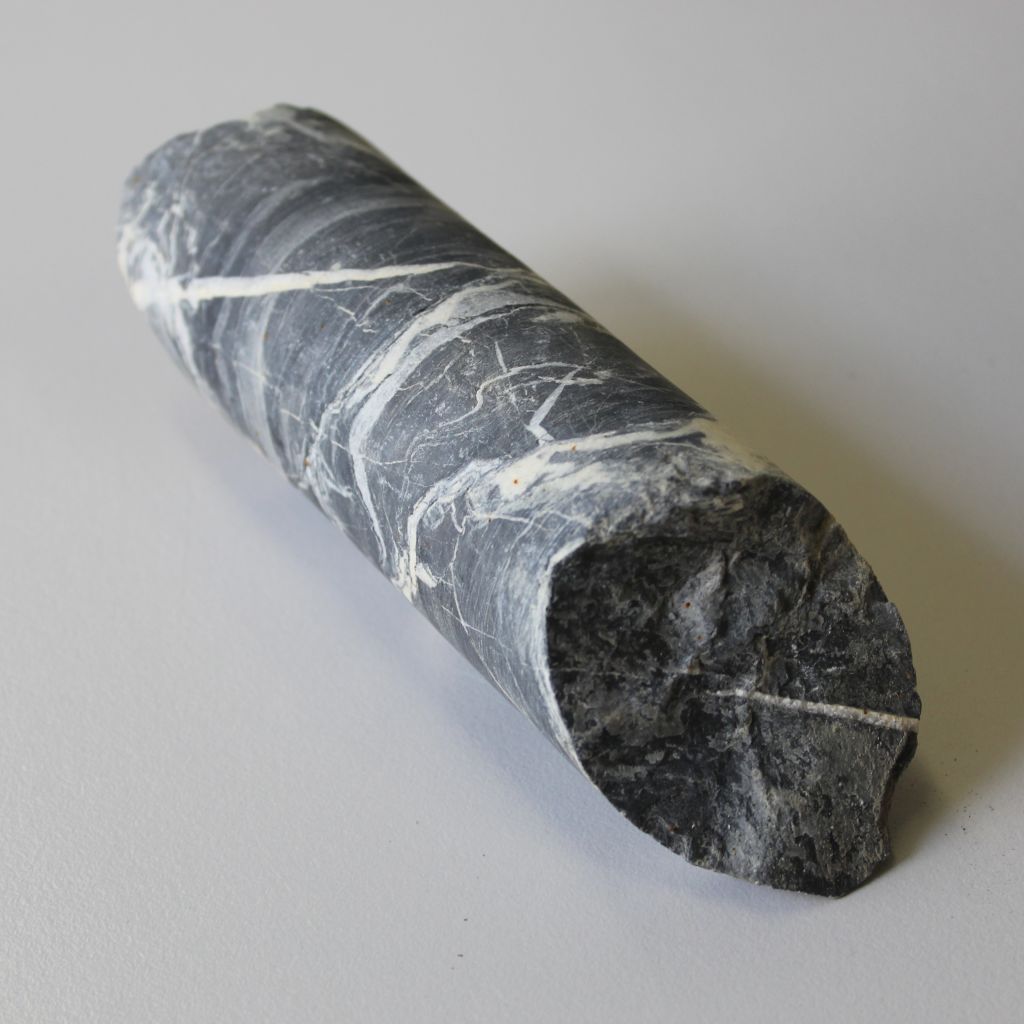Mylonite

Those rocks are a matter of relatively large Mylonite which origin cannot be declared anymore. At the construction of the first Tunnel the Mylonite was perceived as being stable and unproblematic, although it was containing large amounts of water in the first 15 m.
|
Location |
From Preda entrance 1,236.5 m (after Raibler cellular limestone) and 3,912.5 m (in Albula granite) |
||
|
Length |
54 m and 66 m |
||
|
Characteristics |
Mylonite consists of finely flaked layers of silicate, embedded in a matrix of superfine-grained quartz and calcite, with veins of calcite running through it. |
||
|
Faults |
It is physically damaged (but re-crystallised) fault-zone rock, with a hard, relatively compact consistency. |
||
|
Hazards |
Rockfalls are not likely, given its structure, and this material does not suppose any particular difficulty for tunnelling. Historical reports suggest that major ingress of water can be expected along the first 15 metres (from the Preda end). |

